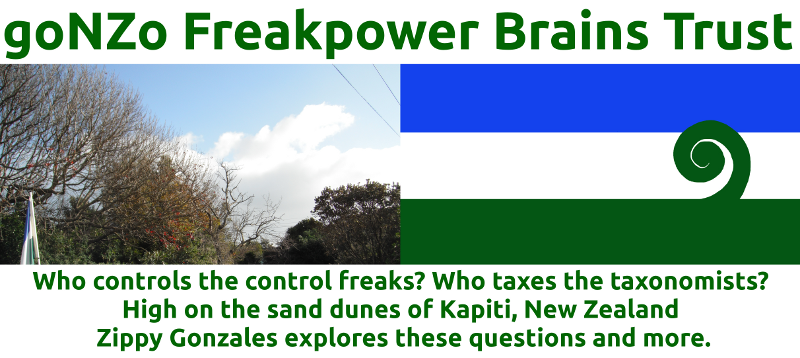The report is a largely noddable affair. Yep, good on them saying the biggest single rort that should go is the one seat party fortress that gave disproportionate proportionality to selected swing seats such as Wigram, Epsom and Ohariu. That is, the party threshold is 5 percent, except for Jim Anderton's 1.7 percent in 2002 giving him a free Robson, or Act's 1.51 percent getting a free Roy in 2005, or Act's 3.65 percent in 2008, which bought in Act's penultimate line-up of munsters. The fiddling John Banks can only blame his own party for giving cushion fortresses a bad name.
And good on them for mentioning the proportional crunch on the long horizon, when electorates and List seats face a patching. But that's a whole other can of worms along with Broadcasting allocations, Parliamentary back-doors that favour incumbents, the democratic deficit and all other electoral conundrums that were beyond the group's terms of reference.
If there's any strong objection I have with the report, it is with one word; most. It appears on the rather important matter of the Party Vote threshold, the so-called Goldilocks number. The word is used in a most inappropriate fashion after a long string of similarly non-quantitative qualifiers.
WTF? OK, put the following phrases in order of the size they are describing: A great many, a few, a substantial number, great weight, most, significant number, some. The words appear in the following text:

According to the approximate figures gleaned off the accompanying graphs, the correct answer is:
Some (200), a few (550), most (600), substantial number (950), significant number (1000), great weight (1700), with great many being the superlative (3040).

More bluntly, most submitters (1000 cumulatively) favoured a threshold lower than four per cent. The number of submitters supporting a four cent threshold (600) was only slightly more than all the nutjobs , feather-bed incumbents and Peter Shirtcliffe groupies who wanted the threshold raised.
The report's Goldilocks number of four percent is weakly supported.
The report wisely cautions against applying a different threshold onto elections past. True dat. For all this talk of the Bill and Ben Party getting a seat, the reality is that it will never happen. Likewise, the threat of too many parties in Parliament is an empty threat that is getting emptier as each election comes around. Here's a few factoids from all 6 of NZ's MMP elections:

The report completely ignored any possible link between party list thresholds and voter turnout. Fair go, you can't get too bogged down in the nebulous world of political activity. However, enrolled non-voters are still part of the proportionality mix. Their lack of interest in the dwindling range of parties on offer might just have some effect on the future of MMP.
Likewise, the report ignored that Parliament operated perfectly fine when sub 5 per cent parties were in the House, as noted back there in the second graf. The report also seemed to put too much stock in the public perception that there are too many parties in Parliament, therefore the threshold shouldn't be lowered. This is arrant nonsense. Not only have the numbers of parties contesting elections dropped precipitously, the existing DAGGS (Devil's Advocate Gone Gliding Solo) of Dunne, Banks and Harawira will be unaffected by whatever the party list threshold is set at.
Nor does the report adequately explain how a candidate can win an electorate needing no more than 17,500 votes to secure an electorate of around 35,000 constituents (Nicky Wagner won Otautahi Central last election with 12,064 votes). Yet if that candidate wanted to run a wider, regional and List-only based campaign under a 4 percent threshold, they would need to secure around 92,000 votes to become an MP (Down from the current 115,000 under a 5 percent threshold). Sure, they would also pull in another 4 MPs, at a cost of 18,400 votes each.
That's not proportionate at all. A three percent threshold is the upper reasonable limit for haggling over, not 4. Two and a half is still my sale point.
